Key takeaways
- Lighting is essential for capturing the beauty of Joshua Tree; early mornings and sunsets provide the best conditions for dramatic photography.
- Using the right gear, including a sturdy tripod and appropriate lenses, is crucial for achieving high-quality images in desert conditions.
- Patience and mindful observation significantly enhance the shooting experience, allowing photographers to connect with the landscape and capture unique moments.
- Editing should focus on preserving the natural feel of the images, enhancing contrasts and details without oversaturating colors.
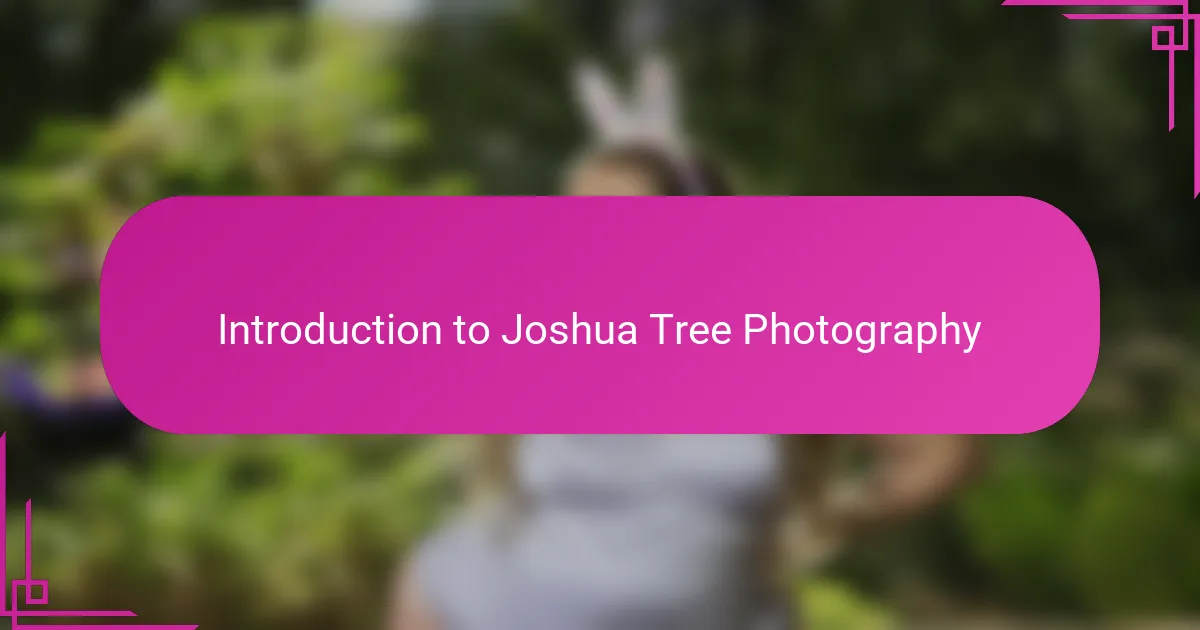
Introduction to Joshua Tree Photography
Joshua Tree National Park has an almost otherworldly quality that I found irresistible through my camera lens. Have you ever stood in a place where the landscape feels both vast and intimate at the same time? That’s exactly what photographing Joshua Tree feels like—capturing the rugged beauty of twisted trees and desert skies that seem to stretch endlessly.
What struck me most was how the light transforms throughout the day. Morning hues cast gentle shadows, while sunset paints everything in a warm, golden glow that makes every shot feel magical. I often found myself waiting patiently just to catch that perfect moment when the natural elements aligned perfectly in my frame.
Photographing here isn’t just about the visuals; it’s about connecting emotionally with the scene. I asked myself, “What story does this landscape want to tell?” And each time, the answer came through the interplay of textures, colors, and the silent presence of the iconic Joshua trees. That’s what makes this place a playground for any photographer willing to look beyond the obvious.
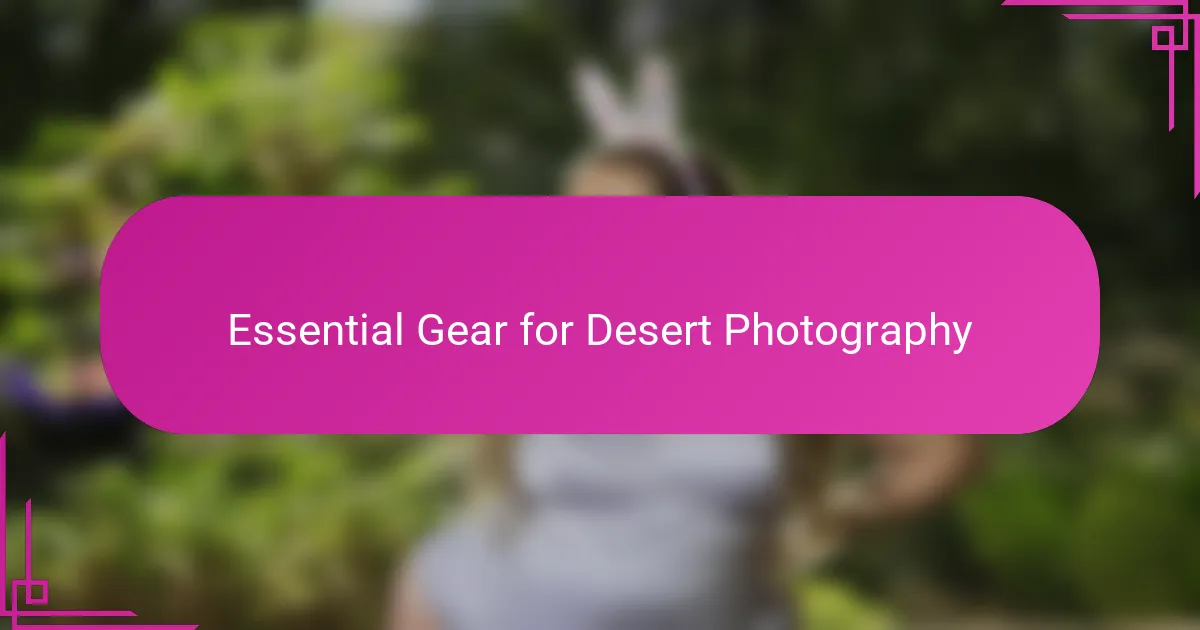
Essential Gear for Desert Photography
Having the right gear is crucial when tackling desert photography in Joshua Tree. I always bring a sturdy tripod because those long exposure shots during the twilight are impossible to get steady by hand. Have you ever tried capturing stars without a tripod? Trust me, the shake ruins the magic.
Lenses are another game changer. I favor a wide-angle lens to embrace the vastness of the landscape, but a telephoto comes in handy to highlight unique details like the spiky silhouettes of Joshua trees against the sky. It’s like choosing your storytelling voice—broad and sweeping or focused and intimate.
Finally, protecting your equipment from the desert elements is something I learned the hard way. Sand and dust sneak into every crevice, so having lens cloths and protective covers is non-negotiable. I remember wiping my lens constantly to keep shots crisp, realizing that preparation makes the difference between a good photo and a great one.
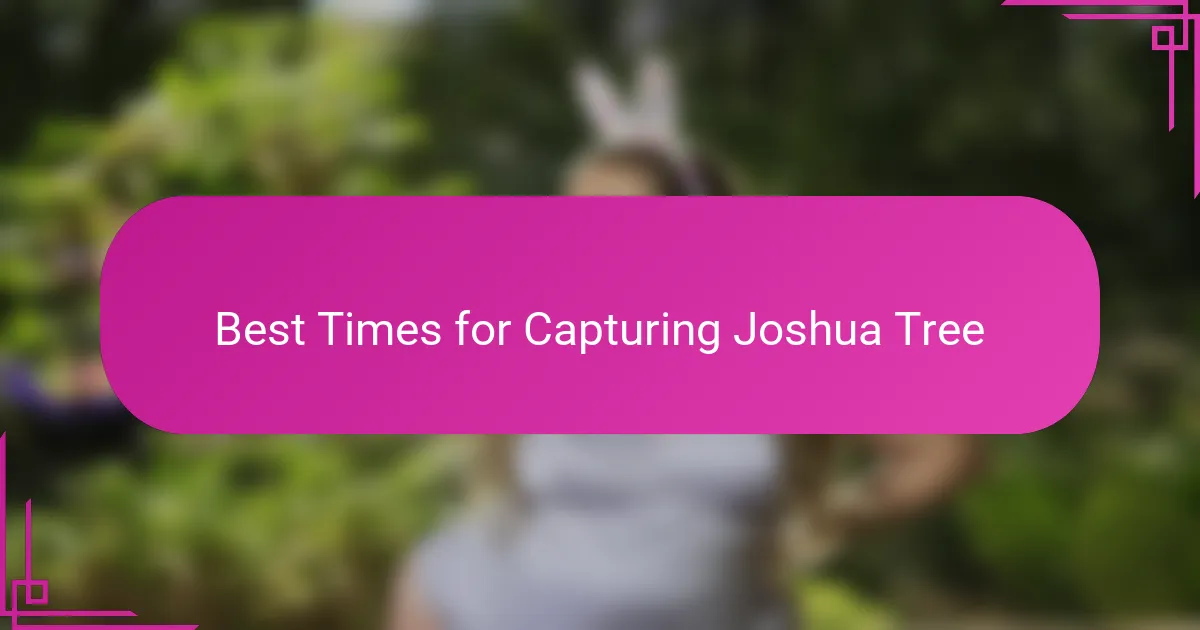
Best Times for Capturing Joshua Tree
One of the best times I found for capturing Joshua Tree is right after sunrise. The soft, cool light highlights the textures of the twisted trunks and casts long, dramatic shadows that add depth to every shot. Have you noticed how the desert feels quieter then, almost like it’s holding its breath just for photographers?
Sunset, without a doubt, is magical here. The golden hour bathes the landscape in warm hues that bring out rich colors in the rocks and make the sky look like a living canvas. I’ve lost track of how many times I’ve been glued to my camera, mesmerized by how the light shifts so quickly, urging me to capture those fleeting moments.
And then there’s the night. If you’re into astrophotography, Joshua Tree’s dark skies offer some of the clearest views of the Milky Way I’ve ever seen. Setting up a long exposure under a canopy of stars feels surreal—like the desert is inviting you to tell a story written in constellations. Have you tried capturing those midnight skies? It’s a challenge, but so rewarding.
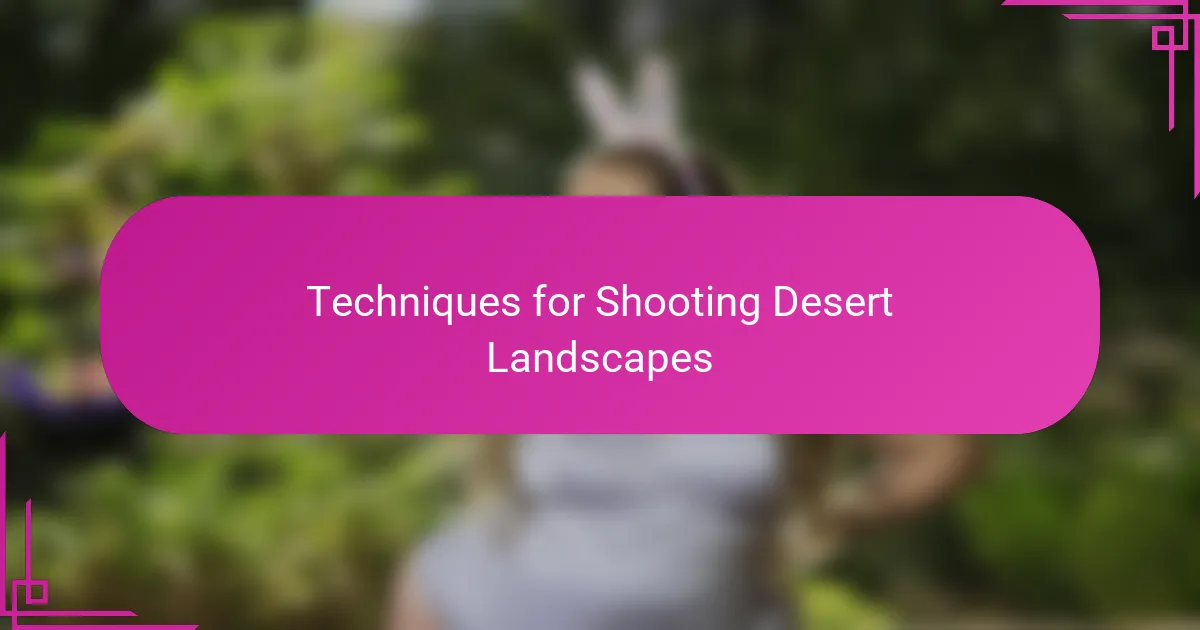
Techniques for Shooting Desert Landscapes
Shooting desert landscapes taught me the value of embracing simplicity. Sometimes, I’d focus on just one striking Joshua tree or a rugged rock formation, letting negative space in the frame highlight the vast emptiness around it. Have you ever noticed how less can truly be more when the landscape itself is so dramatic?
Another technique I found essential was playing with shadows and textures. The desert sun creates sharp contrasts that can either overpower a photo or add incredible depth. I learned to adjust my angles carefully, sometimes crouching low to capture the intricate bark patterns or waiting for clouds to soften the harsh light—each choice dramatically changed the mood of my images.
Lastly, patience became my best friend. Instead of rushing, I waited for the wind to settle so the delicate desert plants wouldn’t blur, or for the shifting light to paint the scene just right. Have you ever stood still long enough to notice how the desert reveals new details with every passing minute? That stillness made all the difference in creating images that truly capture the soul of Joshua Tree.

Overcoming Challenges in Harsh Conditions
Dealing with the desert’s intense heat was tougher than I expected. I remember my hands shaking slightly from dehydration while trying to steady my tripod for that perfect shot. Have you ever wondered how something as simple as staying hydrated can make or break your entire shoot? In the desert, it absolutely does.
Dust storms became an unexpected nemesis. Once, a sudden gust nearly buried my camera in sand, forcing me into a frantic cleaning session that made me realize how fragile gear can be in such harsh conditions. This challenge taught me to always carry protective covers and to be quick on my feet.
Even the relentless sun posed its own struggle. Shooting in midday heat meant harsh shadows and blown-out highlights, which initially frustrated me. But learning to adapt—seeking shade, adjusting exposure, and embracing the brutal light—helped me turn obstacles into creative opportunities. Have you tried turning the problem into part of your artistic process? That mindset shift made all the difference for me.

Personal Insights from My Photo Trip
What I realized most deeply during my photo trip to Joshua Tree was how this place quietly demands a different kind of attention—a mindful presence. Have you ever felt completely absorbed in waiting for just the right moment, knowing that rushing would only steal the magic? That kind of patient observation transformed not only my photos but my entire experience.
There were moments when the desert felt almost like a collaborator rather than just a backdrop. I remember a particular evening when the wind calmed, the sky shifted, and suddenly the landscape seemed to breathe with me. That silent dialogue between the environment and my lens taught me to listen with more than just my eyes.
Sometimes, the most powerful images came from embracing imperfections—dust on the lens, unexpected shadows, or a hurried composition during fading light. Hasn’t it happened to you that these “flaws” end up telling the truest story? For me, Joshua Tree revealed that beauty often lies in the unplanned, the raw, and the real.
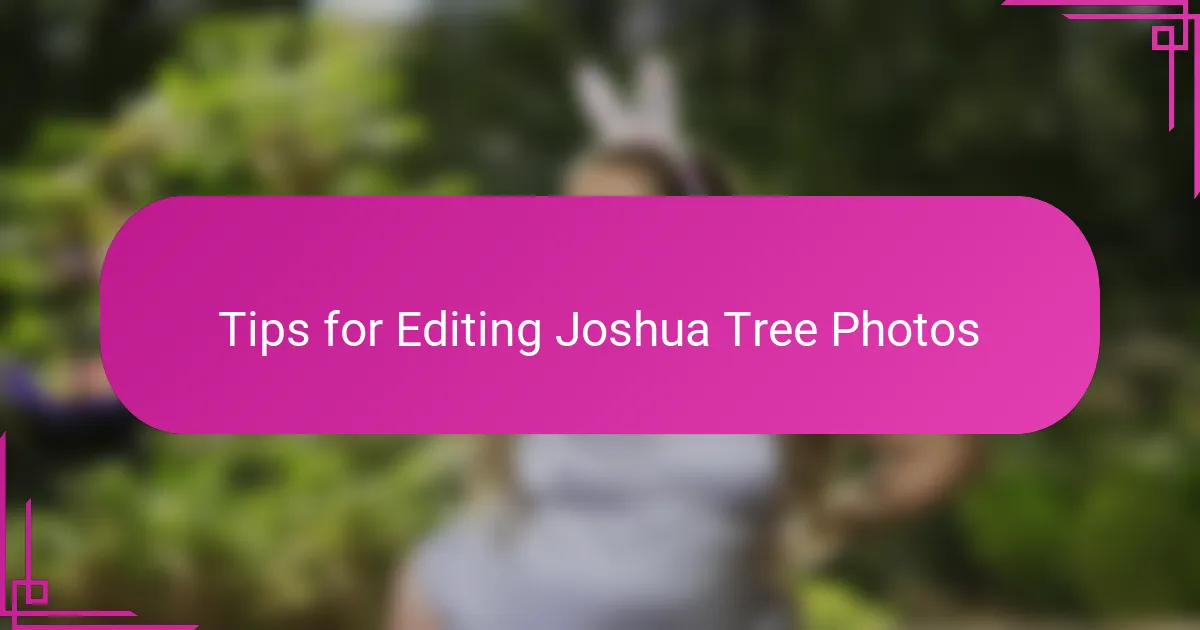
Tips for Editing Joshua Tree Photos
Editing Joshua Tree photos taught me the importance of enhancing the natural contrasts without overdoing it. Have you ever noticed how the rugged textures of the trees and rocks can lose their impact if the colors become too saturated? For me, dialing back the saturation while boosting clarity helped maintain that raw desert feel.
I also found that playing with shadows in post-production can really bring depth to these images. Sometimes, I’d selectively brighten the shadowed areas just enough to reveal hidden details without flattening the scene. It’s a balance—too much editing and you lose the drama that makes Joshua Tree so unique.
Finally, when working with night shots of the starry sky, noise reduction becomes my best friend. Capturing the Milky Way often means high ISO settings that introduce grain, but carefully smoothing that noise without sacrificing sharpness took my astrophotos from good to unforgettable. Have you ever wrestled with noisy night images? Getting that balance right is pure satisfaction.